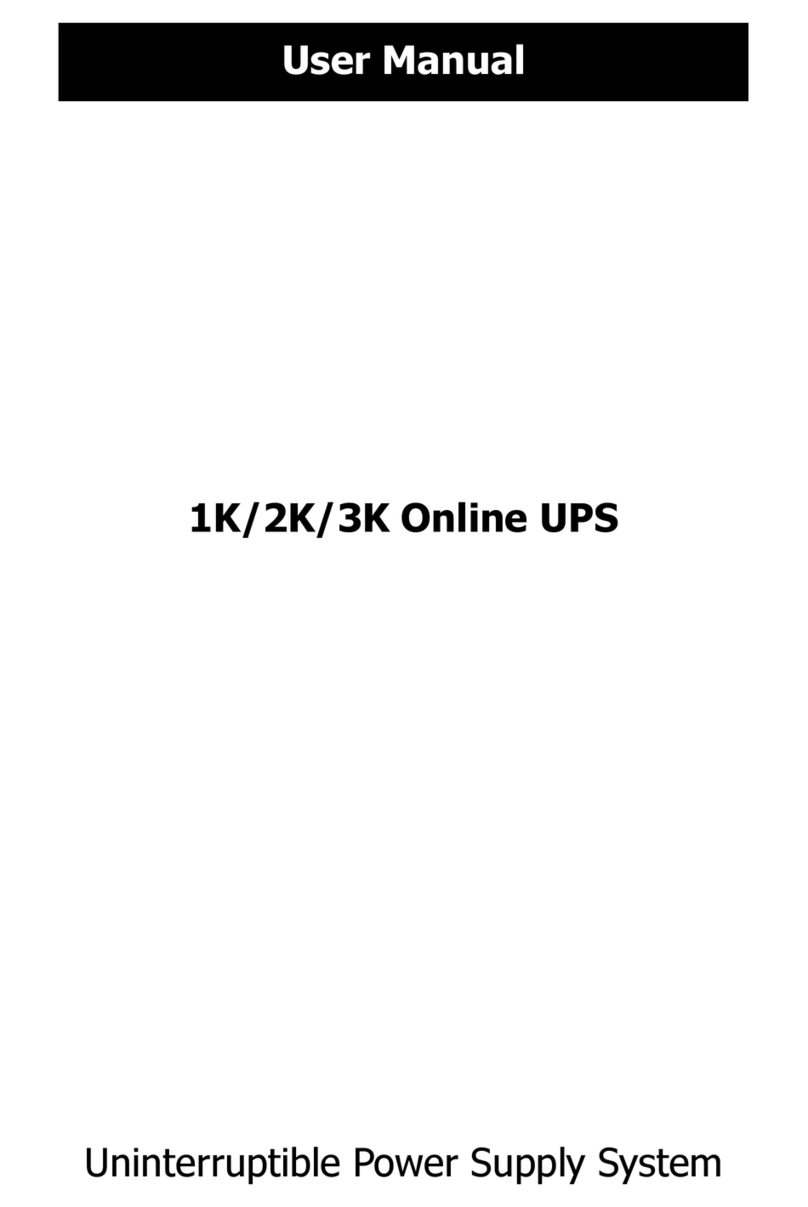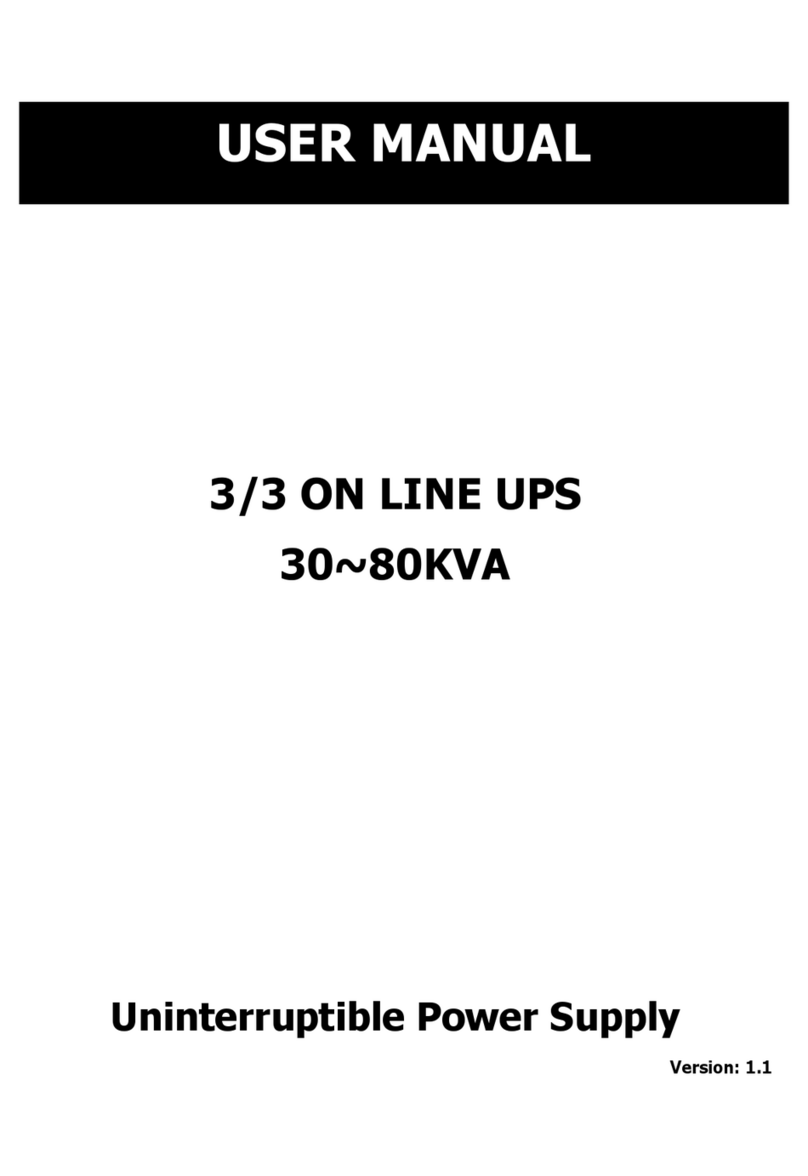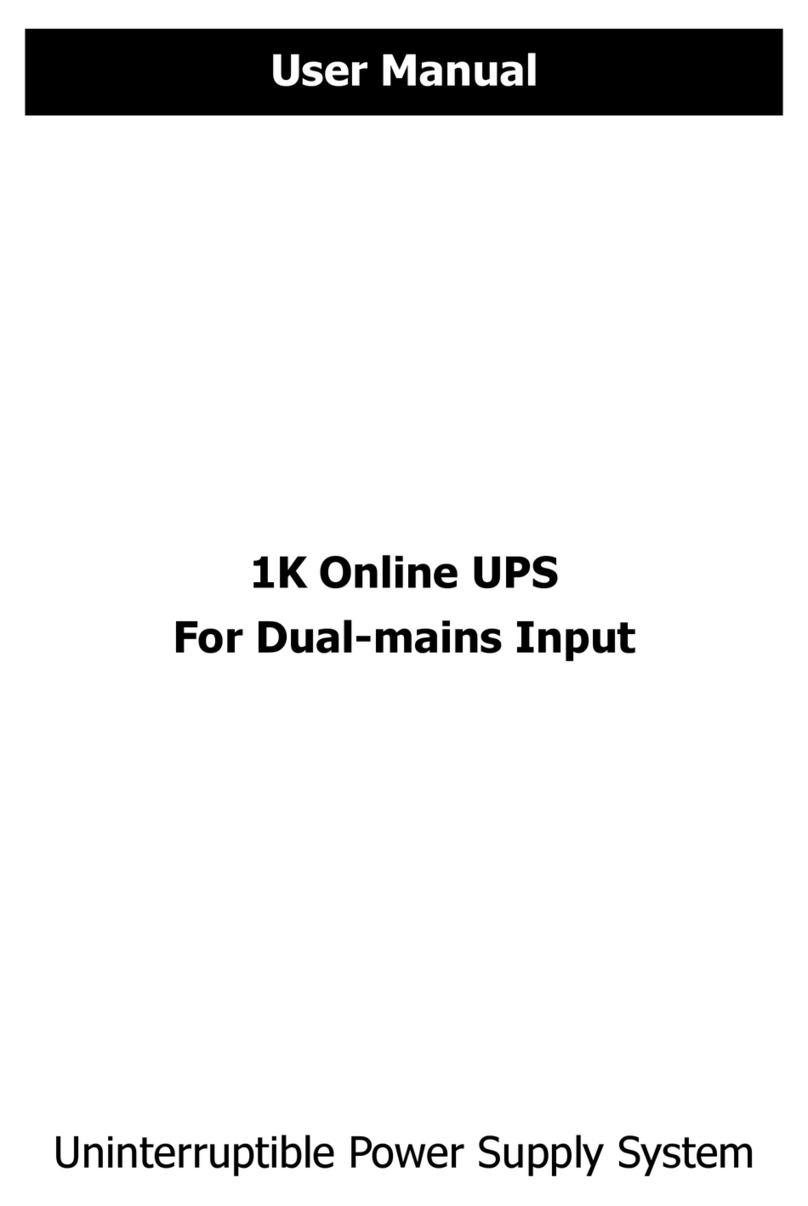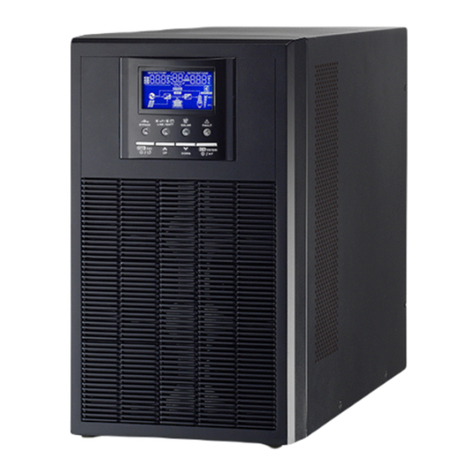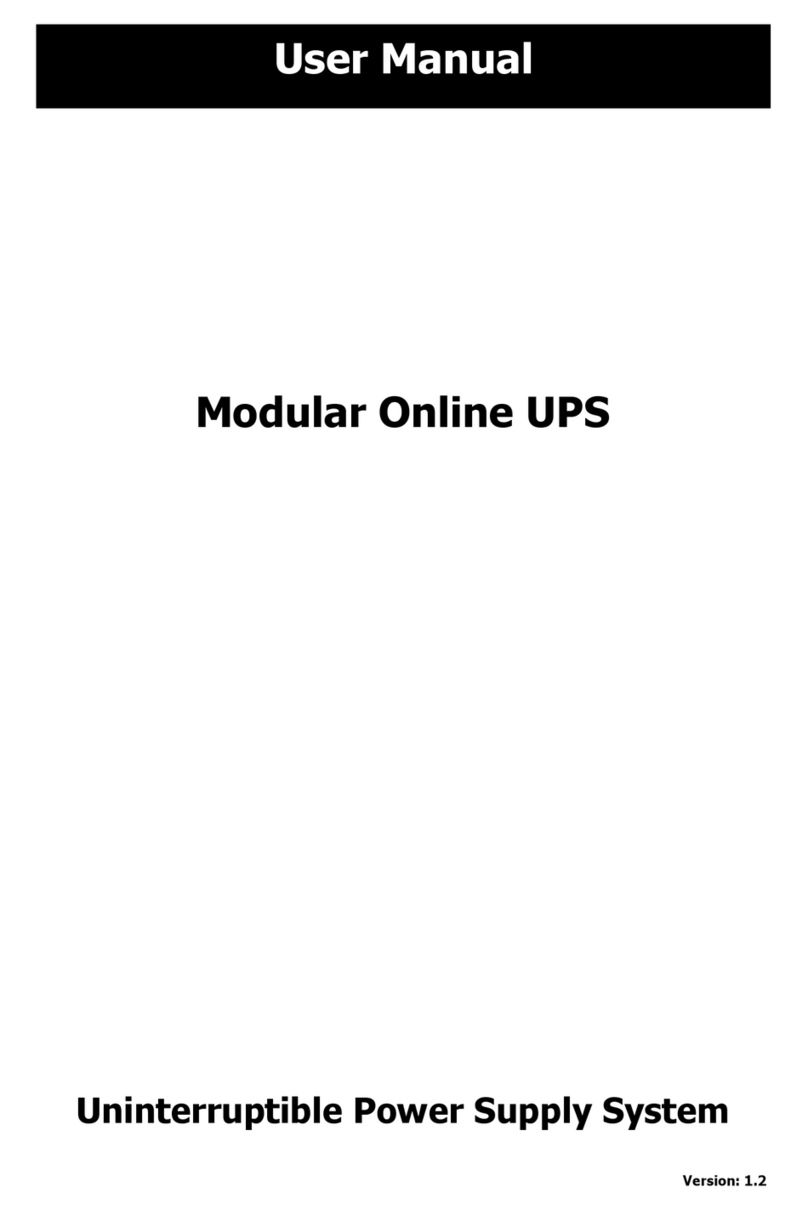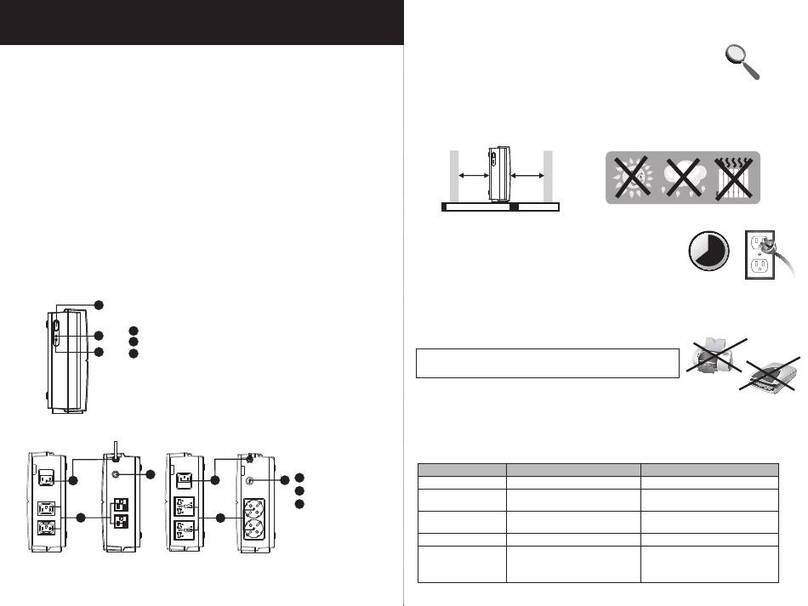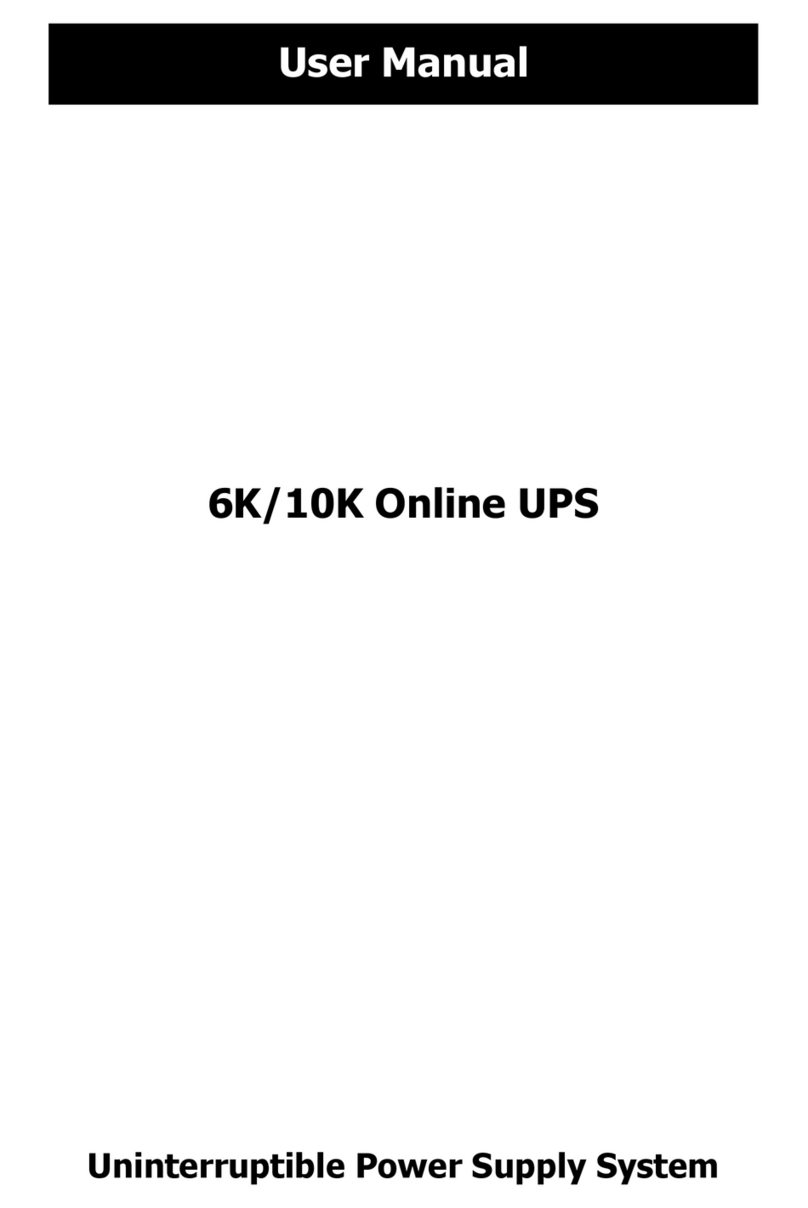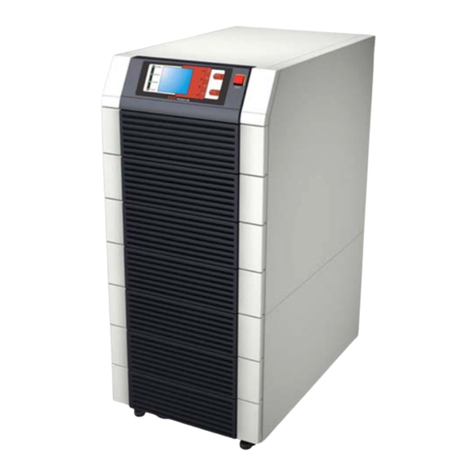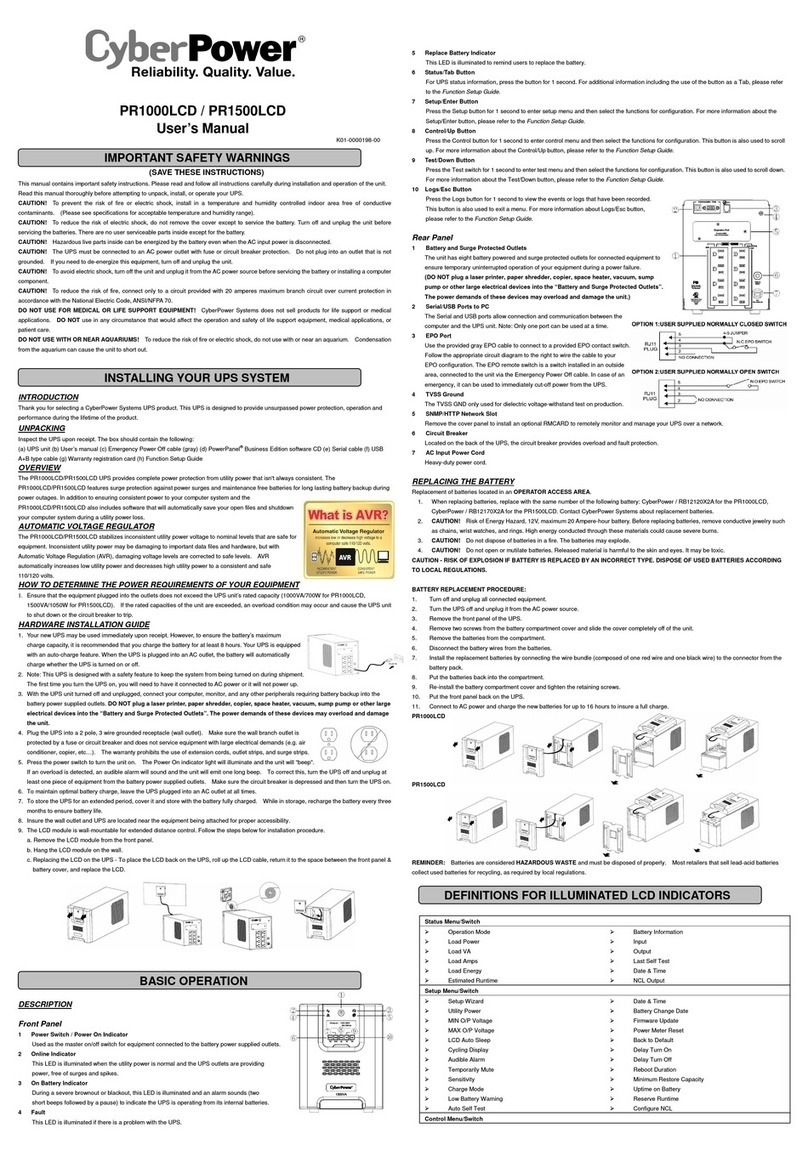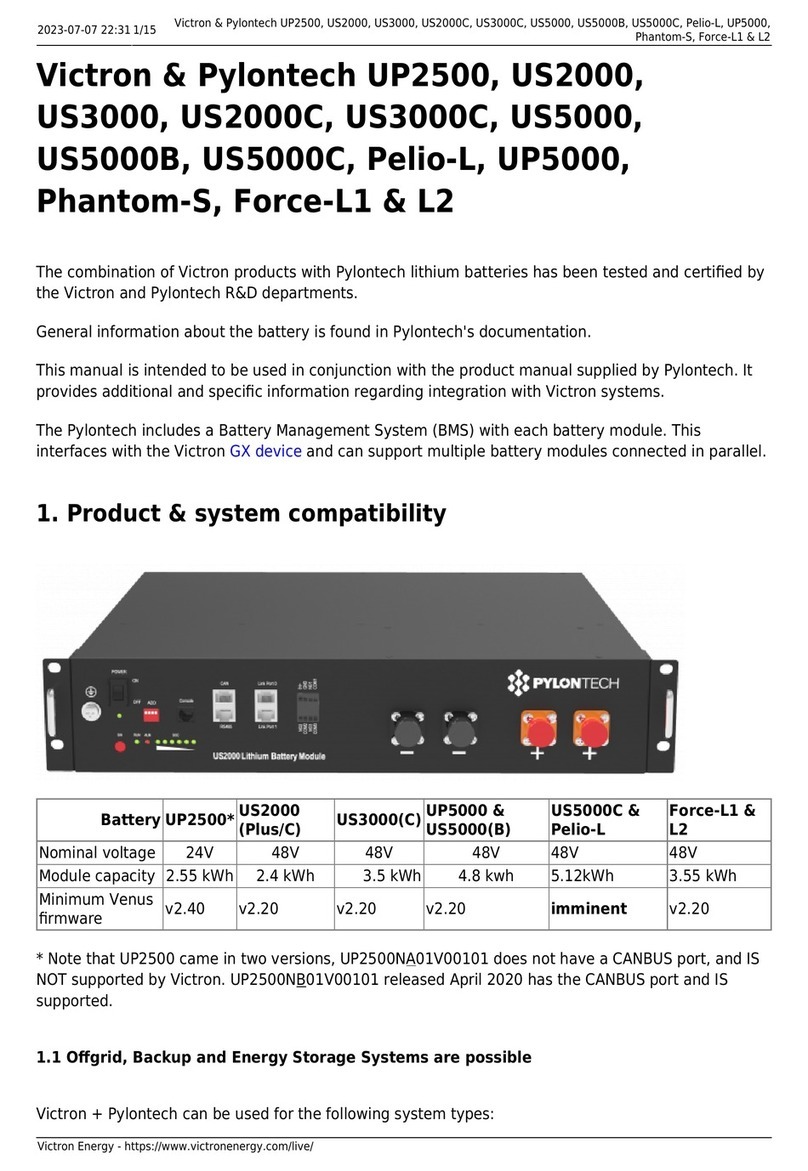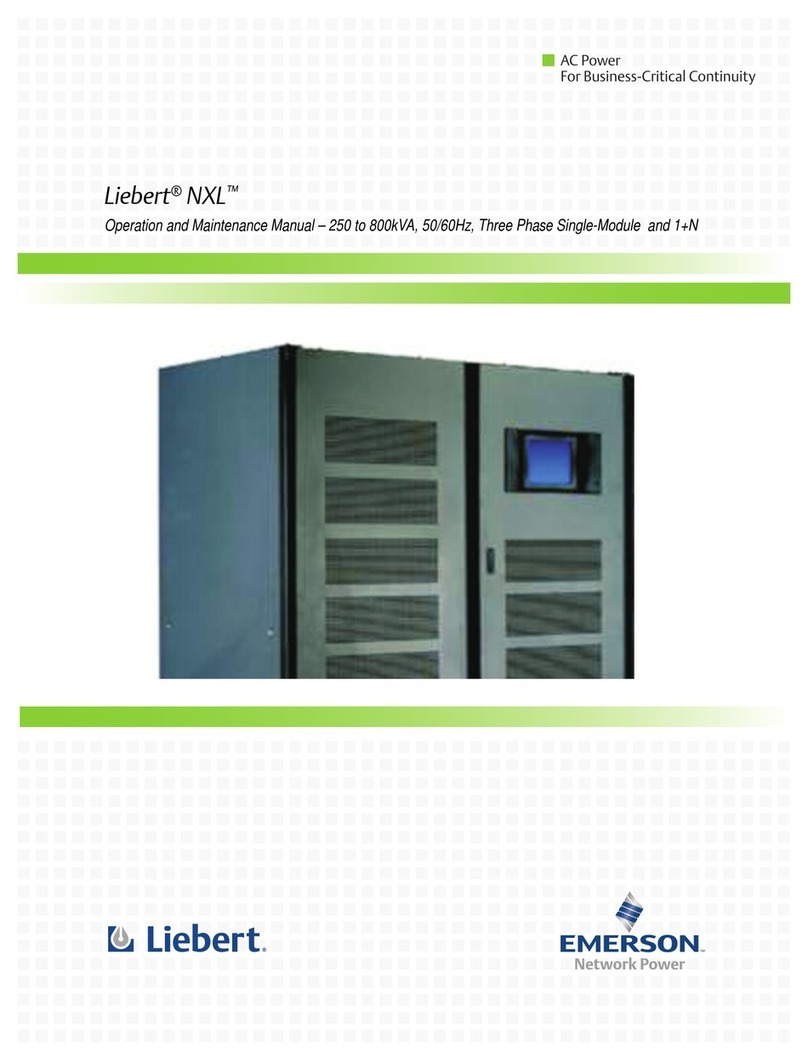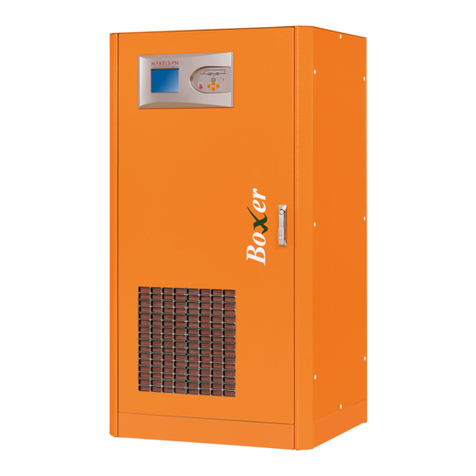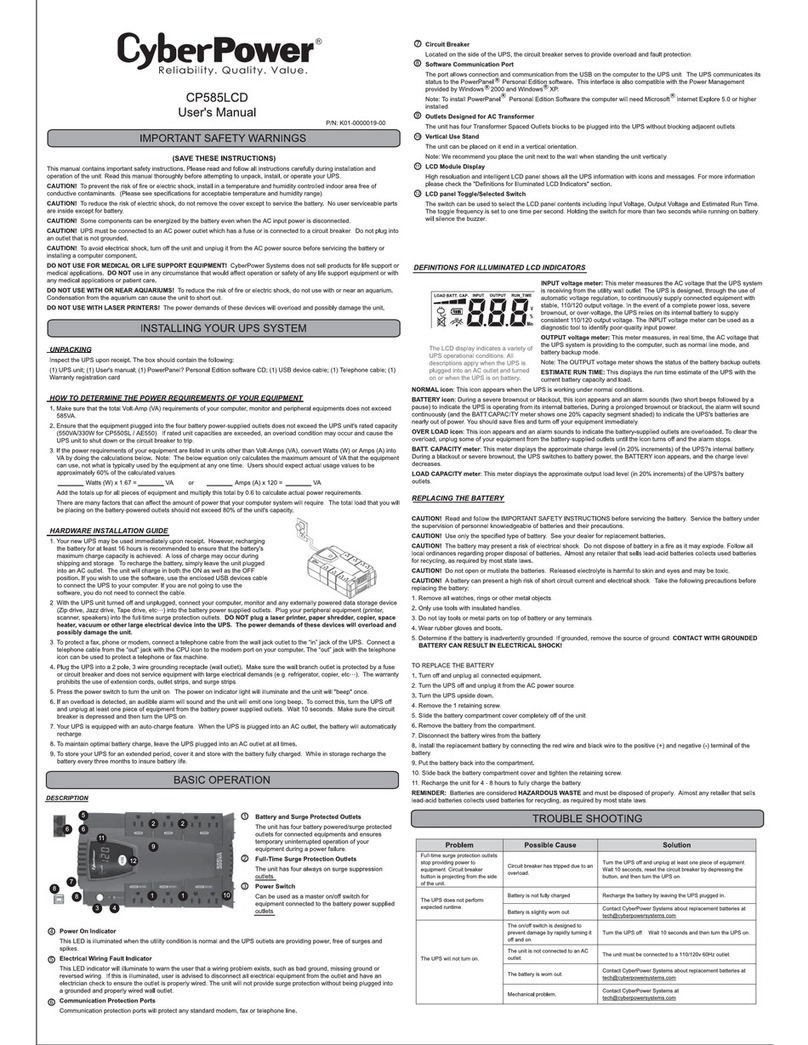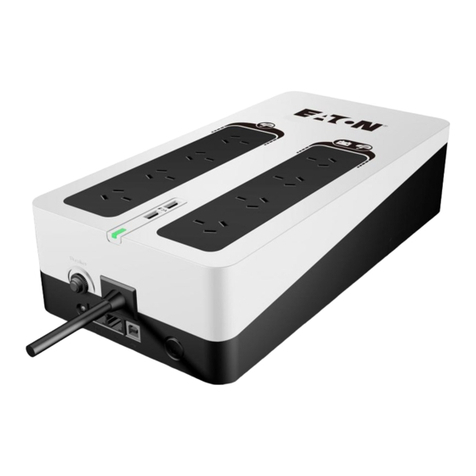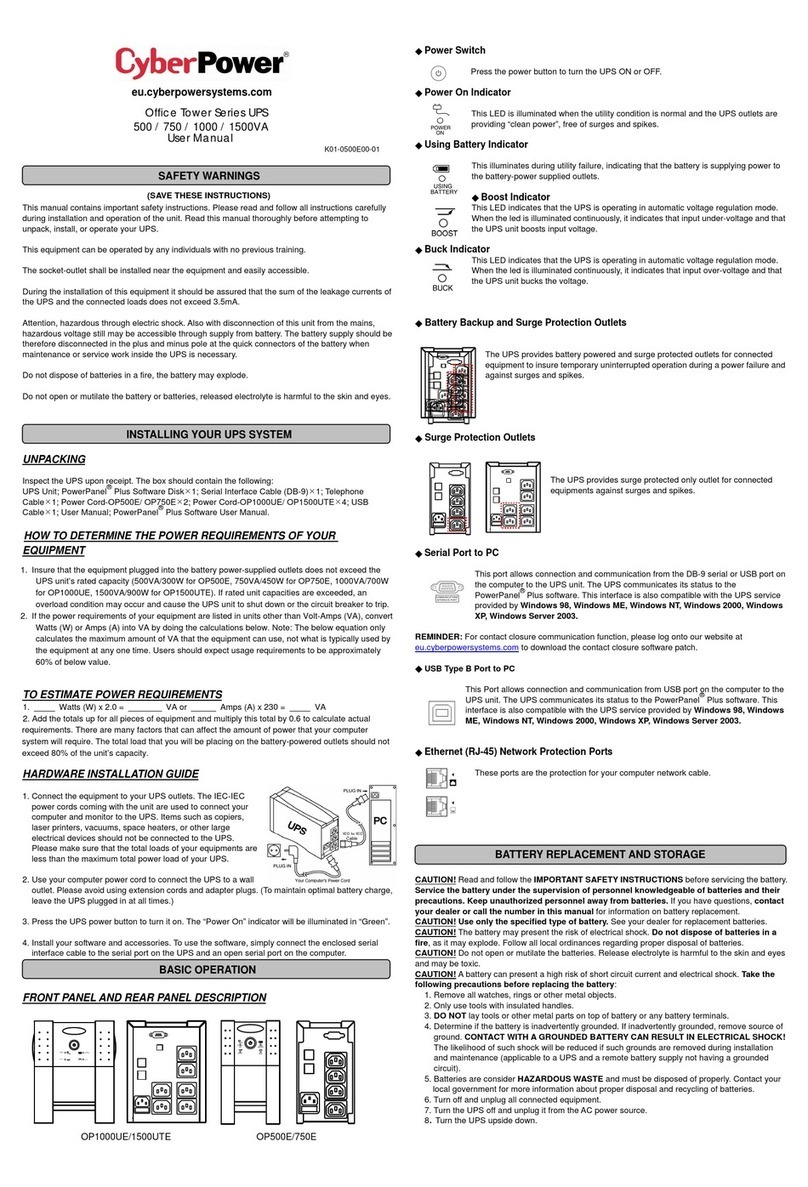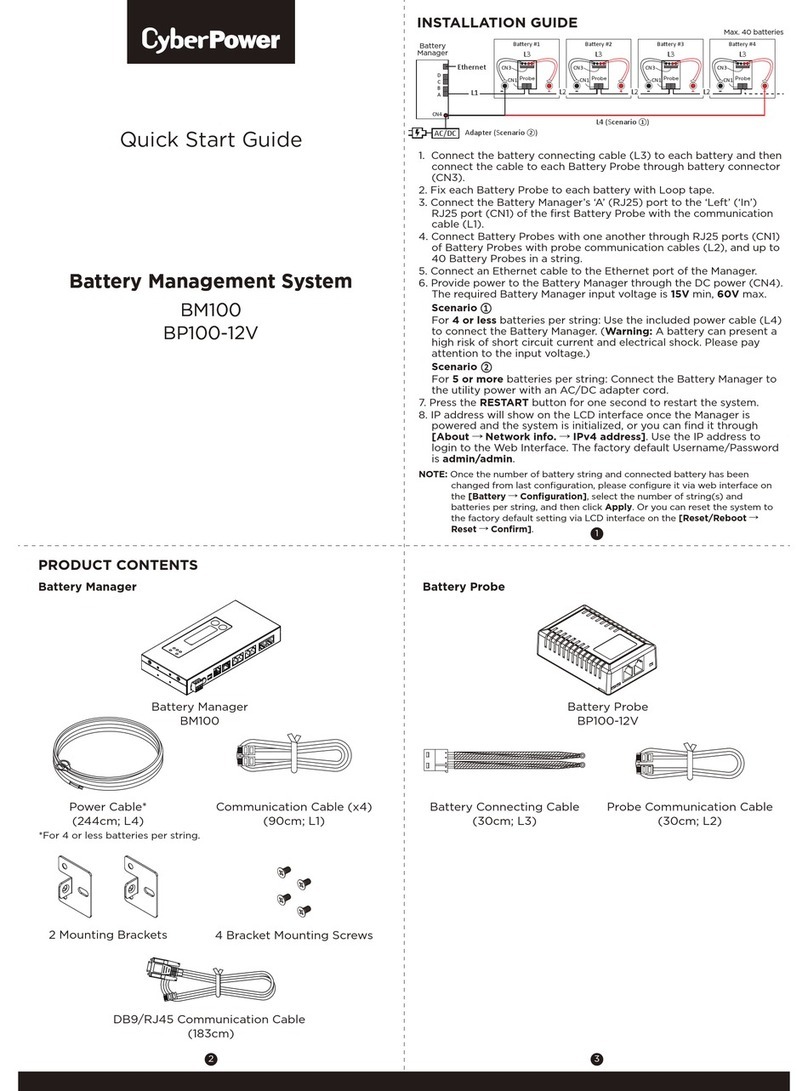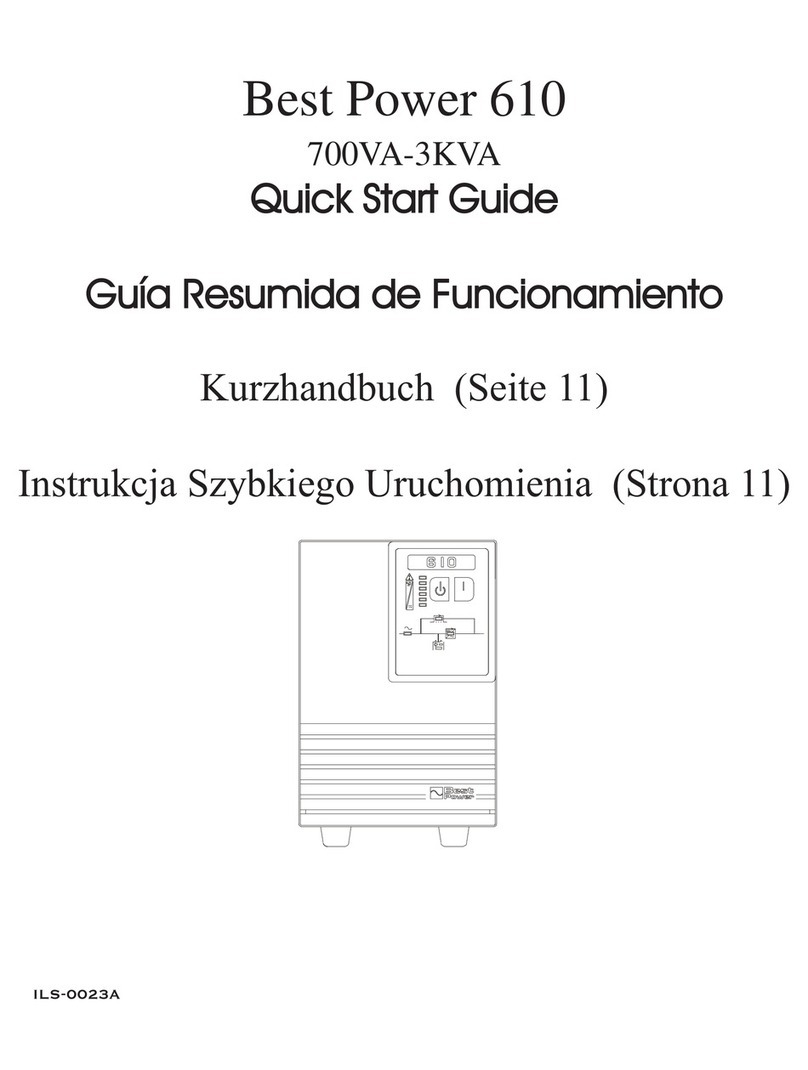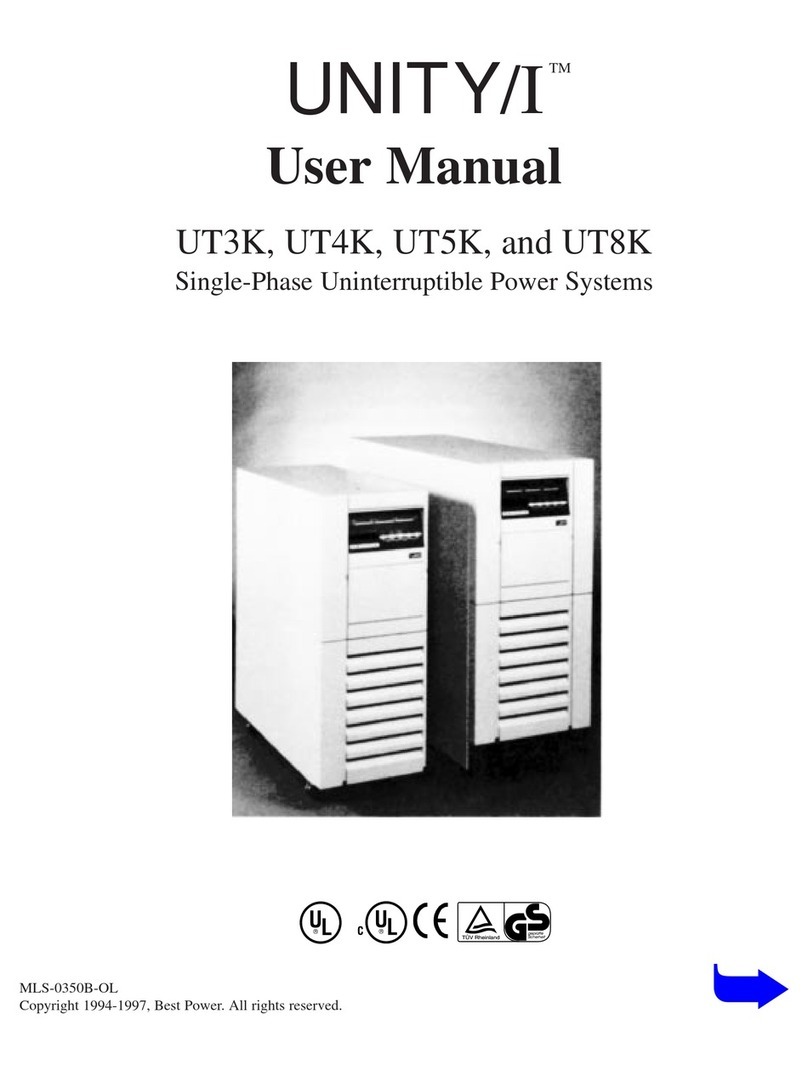• The UPS is supplied in complete package from factory in the
best way for its transport and shipment till you receive is. It is
recommended to remain it packaged until it arrives to its final
location.
• When serious damages are observed in the package, or its level
of damages can be sensed in the contents and/or the shock
indicator is in RED, handle the product according to the
instructions stated in the own label of transport control.
Keep the affected equipment isolated from other received
equipment, and wait the further inspection by qualified staff.
In case it has to be returned to the factory or your distributor
but the same package is in poor conditions, contact with the
appropriate person in order to agree the way and conditions for
its return.
• Respect the unpacking instructions, as well as the established
mode to remove the equipment from the pallet.
These operations require the manpower of at least two
persons.
• The equipment has to be always in vertical position.
When moving the equipment, consider the slope of the
ground or surface and the risk of tipping.
• Be careful not to lift heavy loads without other people’s help.
Please refer to the following recommendations:
, < 18 kg.
, 18 - 32 kg.
, 32 - 55 kg.
, > 55 kg.
• To avoid accidentally dropping equipment or any
damaged enclosure, do not start it up under any concept. This
kind of fault can cause fire or electrical discharge. Contact
with our (S.T.S.).
• Some models include casters to move it till its location. They
are not designed for long distances or constant movements.
The equipment shall be guided by two persons as minimum,
which will be placed on either side and oriented to the walking
direction.
• UPSs are electronic equipment. Avoid jolting or bouncing like
those produced by moving the equipment over an uneven or
wavy surface.
• When moving an equipment from a cold to a warm environment
and vice versa, condensation (small water drops) might occur on
the external and internal surfaces. Before installing a moving
equipment from another place or even package, the
equipment should be placed in the new location for a minimum
of two hours before making any action, with the purpose of
adapting it to the new environmental conditions and avoid
possible condensations.
The UPS has to be completely dry before starting any
installation task.
• Do not store, install or expose the equipment in corrosive,
wets, warm, dusty environments or with conductive parts and
never outdoors.
The best location for installation should be cool, dry and far
from heat sources and easy to access. If possible, place it in
an environment with temperature control.
• Avoid locating, installing or storing the equipment in places
with direct sunlight or high temperatures. Batteries might
damage and/or shorten its lifetime.
In the exceptional and long exposure of intense heat, batteries
can cause filtrations, overheating or explosions, which can
cause fires, burn or other injuries. High temperatures can also
make deformation in the plastic enclosure.
• Do not obstruct the cooling grids by inserting an y objects
through themselves or other orifices.
• Locate the equipment to the power supply outlet and supplied
loads as close as possible , leaving an easy access in case of
an urgent disconnection.
• All models with casters have four leveling feet at each corner of
the base, with the purpose of locking and level the unit.
Loosen them until they can be lifted from the ground.
With the help of a spanner, act on each one and loosen
them half round more against the ground.
For slightly uneven grounds, immobilize the equipment with
these leveling parts.
Check if the equipment is completely immobilized.
Fortuitously pulling out the connection cables from the
equipment will indirectly be avoided so unexpected
movements will not happen.
• Regarding any interventions inside the equipment, battery
cabinet and battery manipulation is a task reserved to
personnel with specific or qualified knowledge only and in
particular to (S.S.T.). It is mandatory to immobilize the
equipment with the leveling feet- stated in the previous point,
before doing any action.
Attention! Risk of tipping may happen when the
battery trays are moved without stabilizing the unit first.
Do not remove more than one tray at the same time. High risk
of injury may take place over the operators due to accident
shock of the possible equipment falling down and/or
entrapment.
• Leave a minimum of free space to cool the unit of:
25 cm at both sides.
50 cm at the rear side.
100 cm at the top side.
150 cm at the front side.
• It is recommended to leave an additional 75cm at both sides,
for possible interventions of the (S.T.S.) or the requisite
clearance of the connected cables to facilitate the movement
of the equipment.
• Do not cut, deteriorate or manipulate the electrical cables, or do
not put heavy objects on them. Any of these actions could
cause a short-circuit, fire or electrical discharge.
Check if the connected electrical cables, plugs and outlets are in
good conditions.


